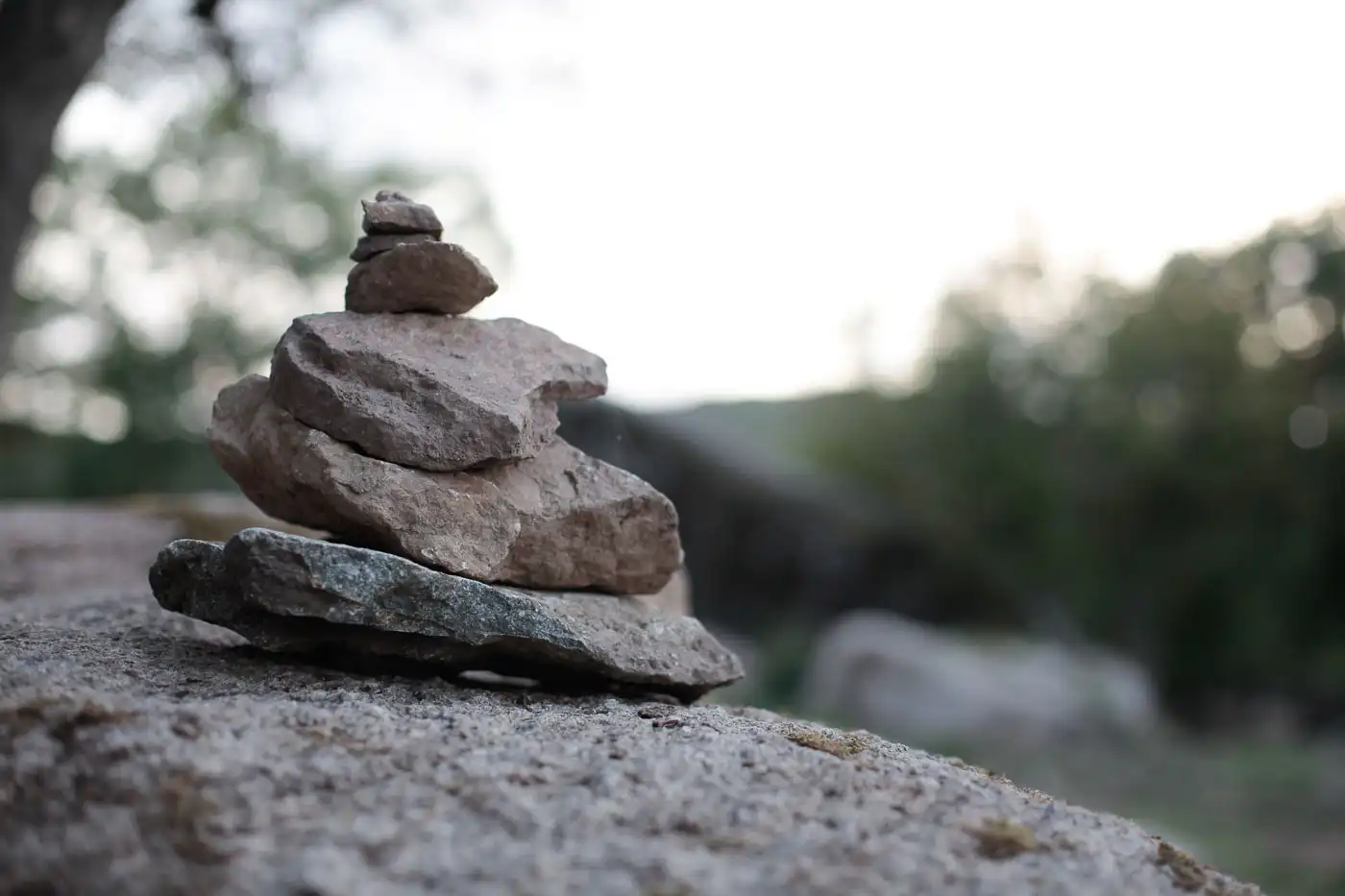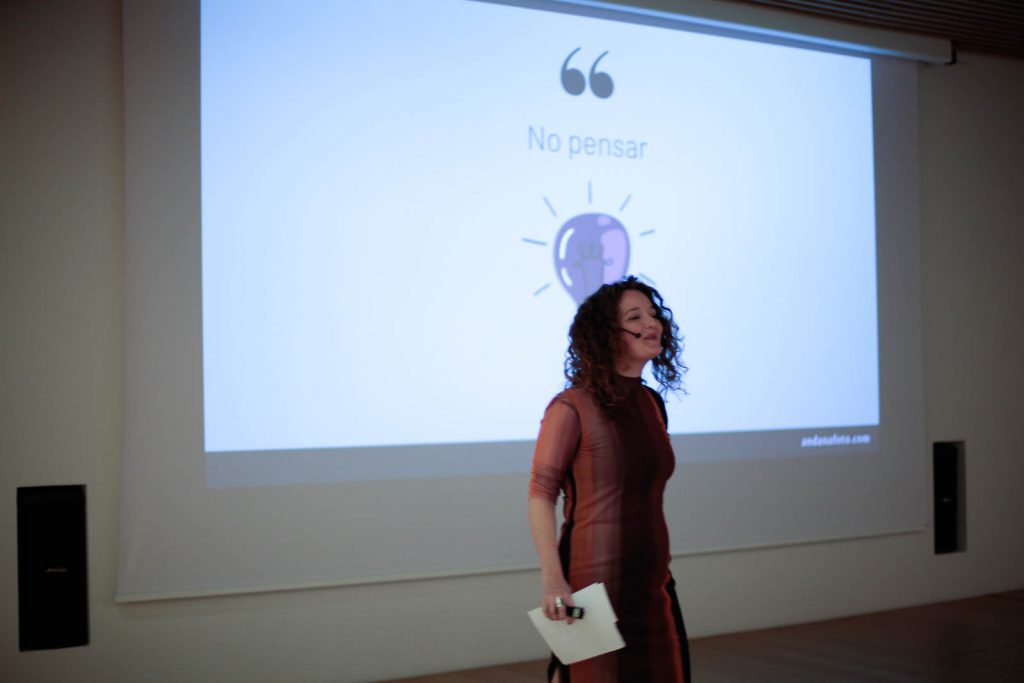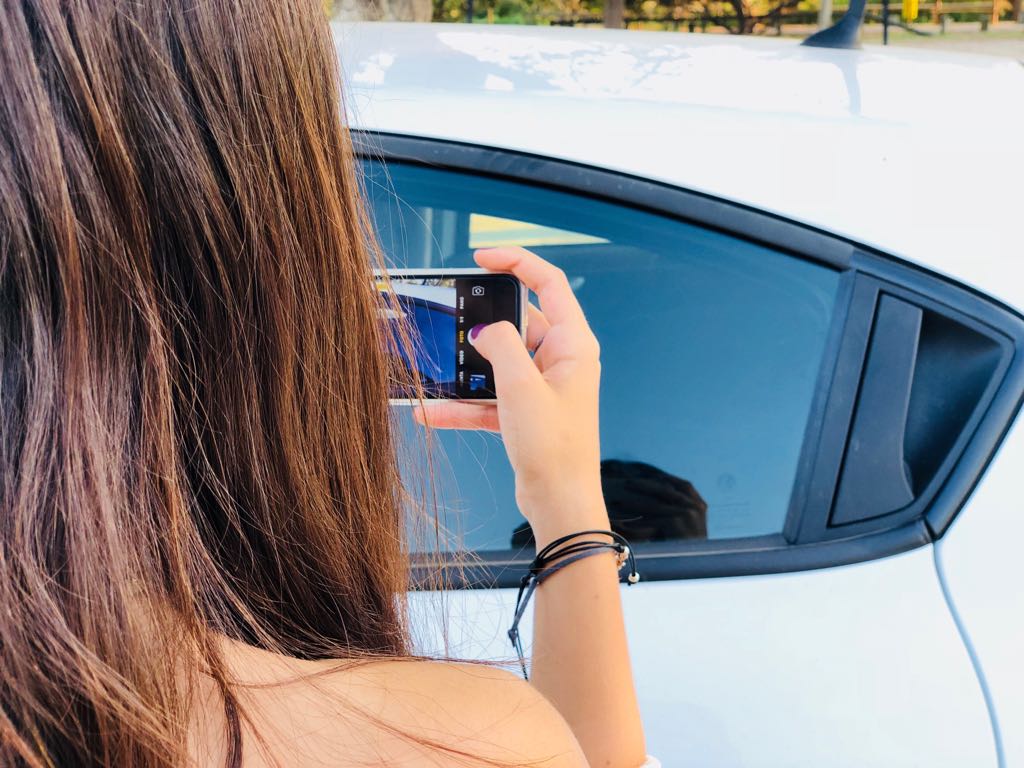
According to the 2024 Mental Health Atlas by the World Health Organization (WHO), more than one billion people worldwide currently suffer from a mental health disorder, with anxiety and depression being the most common.
This increase, linked to social, economic, and technological factors, has driven the search for complementary and accessible tools that support emotional well-being and psychological self-regulation.
In this context, photography is emerging as an innovative practice that combines creativity, mindfulness, and self-awareness. Its use is being explored in clinical, educational, and community settings, showing potential to reduce symptoms of anxiety and depression, boost self-esteem, and foster emotional connection.
In this interview conducted by Arturo Arias for Stockholm University, psychologist Amparo Muñoz Morellà explores the scientific and psychological foundations of using photography as a therapeutic tool. Drawing on her experience in the ANDANA project and recent research, the theoretical foundations, mechanisms of action, benefits, and also the limitations of this practice are discussed—an approach that is gaining increasing attention in the field of mental health.
What is your experience and/or background in phototherapy and therapeutic photography?
My professional career has developed at the intersection of psychology, education, social intervention, and visual expression. For over twenty years, I have worked—and continue to work—as a social services psychologist for the City Council of Catarroja (Valencia, Spain), in community contexts, developing support programs for people in vulnerable situations and facilitating spaces for expression.
In recent years, my research has focused specifically on the use of photography as a tool for personal development and health. This line of work stems from the need to offer alternative paths for self-knowledge and psychological care, especially for people who find verbal expression difficult or who need other ways to connect with their inner world—using an accessible and simple tool like photography.
My training in the field of image began as a self-taught journey, born from an early passion for photography and art. I hold a degree in Psychology from the University of Valencia and completed a Master’s Degree in Psychotherapy: Third-Generation Therapies (UNIR), where I deepened my understanding of expressive approaches. I also completed the Advanced University Program in Mindfulness, which allowed me to explore attentional training as a tool for emotional regulation. Over the years, I have complemented my academic background with courses and seminars related to art and therapy. I continue to train and grow in this field.
Since 2015, together with my colleague Javier Sancho Boils, I have been developing the ANDANA project—a training and outreach initiative that uses photography as a tool for self-knowledge, educational transformation, and social change. This approach integrates Acceptance and Commitment Therapy (ACT), visual mindfulness, visual culture education, and practical photographic expression exercises. The program has been applied and validated in both educational and therapeutic contexts and forms the basis of my academic research on the effects of photography on self-esteem, psychological flexibility, and mindfulness.
The ANDANA project has taken us on an exciting journey combining education, creation, and outreach. We have delivered online and in-person training in several countries around the world, reaching over 30,000 students from highly diverse backgrounds: students, psychology and education professionals, photographers, therapists, and individuals interested in photography as a tool for self-discovery and social change.
Along this journey, we have written five books, each aimed at exploring new perspectives on the relationship between image, education, and personal development. These publications include not only theoretical insights but also practical experiences, testimonials, and exercises that have served as inspiration and guidance for thousands of people.

The project has also allowed us to bring our voice to spaces of great cultural and academic relevance, with conferences and workshops held in museums, universities, and international centers. We are happy because after 10 years of hard work and research, ANDANA is now a global community—a space where creativity, psychology, and art converge, and which continues to grow with the purpose of bringing photography into everyday life as an accessible and transformative tool.
What is the connection between image, neuroscience, and the psyche?
The image is an ancestral form of thought. Even before verbal language existed, human beings were already organizing their experiences through symbols, gestures, and mental images.
From neuroscience, we know that the human brain processes images faster and more deeply than words. Seeing a meaningful image can activate neural networks related to memory, empathy, emotion, and even decision-making.
When someone looks at a photograph, regions such as the amygdala (involved in emotional processing), the hippocampus (which manages memory), and the medial prefrontal cortex (responsible for reflection) become active. That’s why looking at an image is not a passive act—it can be a direct gateway to our emotions, an opportunity to reinterpret lived experiences, or to observe patterns of thought or emotional responses, thus contributing to our self-awareness.
Furthermore, photographic expression involves the activation of introspective thinking and imagination. This makes it a powerful tool for therapeutic work, especially when combined with processes of writing and reflection.
The poetic beauty of photography is that, as its Greek origin suggests, it means “writing with light”—and it can truly be considered a form of visual writing, one that allows us to narrate without words and, at times, go beyond what language can express.
Can photography be used as a therapeutic tool to address the rising mental health issues such as anxiety and depression? Has any work or research been done in this regard?
Yes, therapeutic photography is proving to be an effective tool for addressing emotional distress associated with disorders such as anxiety and depression—always as part of integrated psychotherapeutic approaches.
In recent years, various studies and projects have validated this practice. I’m including a few here—there are many more, but these are fresh in my mind due to my own research:
- Photovoice, a methodology developed by Caroline Wang and Mary Ann Burris, has demonstrated its effectiveness in enhancing self-esteem, empowerment, and emotional well-being in vulnerable communities.
Source: Wang, C., & Burris, M. A. (1997). Photovoice: Concept, methodology, and use for participatory needs assessment. Health Education & Behavior. - The Therapeutic Use of Photography in Clinical Social Work — DeCoster & Dickerson (2014)
In clinical social work, photography is used as a therapeutic support to explore emotions and rebuild personal narratives, especially in processes involving trauma or depression. - Using Daily Digital Photography as a Form of Self-Care — Dyer (2023)
Taking daily photographs with conscious intention serves as a visual mindfulness and self-care practice, reducing stress and improving emotional well-being. - Therapeutic Benefits and Limitations of Participatory Photography for Adults with Mental Health Problems — Buchan (2020)
Participatory photography with adults facing mental health challenges improves self-esteem and group cohesion, although it requires professional supervision due to the emotional intensity it can evoke. - A Photograph as a Therapeutic Experience — Halkola (2009)
This work analyzes photography as a therapeutic experience of self-knowledge. Looking at and reinterpreting one’s own images supports emotional integration and self-compassion.
In 2025, at ANDANA, we conducted an intervention study in collaboration with the University of La Rioja, based on the training program “Photography to Get to Know Yourself” The results showed improvements in levels of psychological flexibility (measured with the AAQ-II), mindfulness (FFMQ), and self-esteem (Rosenberg Self-Esteem Scale) after an eight-week process.
At a time when, according to the WHO, more than one billion people worldwide are living with mental health disorders, we urgently need scientific evidence on creative, accessible, and non-invasive approaches to complement traditional therapy. Photography can offer exactly that: a channel for emotional expression and regulation that is accessible, non-verbal, and transformative.
What is the difference between photography as art, phototherapy, and therapeutic photography?
Although they share the same medium—image—these are practices with very different goals, contexts, and methodologies:
- Artistic photography: Its purpose is aesthetic, communicative, or conceptual. The focus is on the artwork itself and its visual or cultural impact. While it can be therapeutic for the creator, that is not necessarily its goal.
- Phototherapy: This refers to a set of techniques used by psychology professionals who incorporate images (their own or others’) as part of therapy. It involves working with family albums, childhood photographs, self-portraits, symbolic images… always within a clinical process.
- Therapeutic photography: A guided practice, though not necessarily clinical. It can take place in educational, community, social, or personal growth contexts. Its aim is emotional well-being, self-knowledge, and symbolic transformation.
Both phototherapy and therapeutic photography are often confused due to their similarities. Personally, I don’t place much importance on terminology—I usually speak of photography as a tool. In both cases, what truly matters is that photography is accessible to anyone, regardless of their abilities, artistic experience, or whether they have a psychological diagnosis.
What are the fundamental elements of therapeutic photography?
There are several key factors to consider when working with images. These elements are grounded in mindfulness, Gestalt psychology, Acceptance and Commitment Therapy (ACT), and psychoanalysis. Here they are:
- Conscious intention: It’s not about taking beautiful or well-composed photos, but rather meaningful ones—images created with the intention of answering personal questions.
- A non-judgmental creative process: There are no mistakes, no better or worse images. The therapeutic value lies in the freedom to express and explore without fear.
- Post-reflection: The power of photography continues in what happens afterward—looking, interpreting, narrating, sharing, and re-signifying the images.
- Supportive framework or guidance: Whether individual or group-based, photography can open sensitive doors, which is why it should always be offered within an ethical and safe framework. It must always be approached from a place of joy.
- Personal interpretation: When we look at an image, we do so with everything we are—with our experiences, desires, and hopes. That’s why interpretation is deeply personal. If I interpret your image, I’m actually interpreting myself.
- Body and emotion: The body is often involved. Sometimes the images evoke physical sensations, memories, or somatic reactions—or these sensations themselves become the motive behind the photographs.
- Contemporary art and other art forms: Throughout history, many artists have created transformative projects. These serve as valuable references in psychoeducational work. In some cases, photography may also be combined with other art forms—such as music or performing arts—to connect with all kinds of people.
What are the main benefits of therapeutic photography?
Scientific evidence already highlights several benefits related to self-care and mental health:
- It enhances self-esteem and fosters a deeper connection with one’s personal story.
- It allows for the externalization of emotional pain, offering a new perspective from which to observe it.
- It supports emotional regulation through mindful attention.
- It strengthens cognitive flexibility, which is especially helpful in cases of depression and anxiety.
- It fosters a sense of belonging in group processes.
- It stimulates creativity as a form of emotional repair.
- Además, muchas personas encuentran en la fotografía un canal para reencontrarse con aspectos olvidados de sí mismas, especialmente en etapas vitales de cambio, duelo, trauma o reconstrucción personal.
How can therapeutic photography be used by people who are not artists or professional photographers?
That is one of its greatest strengths. Anyone can use photography as a means of expression and self-care. Photography is immediate and accessible. It’s not about mastering technique, but about expressing intentionally through images and exploring their inner resonance.
For example, in my workshops, I often propose exercises such as:
- Photograph a place that represents your sense of presence at home.
- Create a series of self-portraits as a body-based itinerary.
- Photograph the sky throughout the day as a metaphor for pauses and the passing of time.
- Document your day through the lens of the five senses.
These kinds of practices do not require any prior knowledge, but they do call for an intention to get to know oneself, to experiment, to observe with attention and without judgment, and to reflect on what has been photographed.
Here are some examples of work created by people who are not professionals:
The Photography To Get To Know Yourself gallery
Can therapeutic photography be practiced using modern smartphone technology?
Absolutely. Smartphones have democratized access to this practice, allowing us to carry a camera with us at all times. This way, we can capture everyday, spontaneous moments and turn those images into a visual diary that reflects not only our experiences but also our inner world.
What truly matters is not the device, but the intention behind our gaze and the way we use the images. Many therapeutic photography processes are carried out entirely with mobile phones, and they can include resources such as:
- Editing apps, which make it easy to manipulate images and explore new meanings.
- Personal writings and reflections, which accompany the photographs and enhance their expressive value.
- Collages and compositions, which allow for creative experimentation and the construction of new narratives.
- The family album, which becomes a bridge to revisit memories, reconstruct life stories, and create a space for connection, calm, and reconciliation—with oneself and with others.
Mobile photography is not only accessible, but also approachable and versatile. It adapts to different contexts and individuals, becoming a powerful tool for self-knowledge, emotional expression, and personal transformation.

Do you have a key message or suggestion for people experiencing anxiety or depression about exploring photography as a therapeutic tool?
Yes, absolutely. The message could be:
“Photography can become both a refuge and a tool for self-care. It’s not about capturing ‘beautiful’ images, but about allowing yourself to see your surroundings—and yourself—with new eyes, at your own pace. When we’re going through anxiety or depression, the camera—even the one on a phone—can be an ally that invites us to pause, breathe, and simply look.
When the mind races toward the future (anxiety) or gets stuck in the past (depression), the camera helps bring us back to the ‘here and now.’ To the present, to the breath, to the moment.”
Here are a few simple exercises that can help:
- Look closely, as if for the first time, at the reflection in a window, a curtain, the way light moves through a space. This mindfulness exercise can help you reconnect with calm. You can find inspiration in the work of Uta Barth and her quiet, domestic contemplation.
- Take a walk around your neighborhood as if you were seeing it for the first time. Look for beauty—whatever you find beautiful and enjoy looking at. Two or three photos are enough.
- Turn your camera into an emotional journal: instead of writing, take a photo that represents how you feel today. It doesn’t matter if it’s abstract or symbolic—what matters is that it’s meaningful to you.
Don’t pressure yourself to achieve aesthetic results—therapeutic photography isn’t about technical perfection, but about authenticity and self-connection. You can share your work with your therapist or find a beautiful notebook where you can paste your images, creating your own honest album with words and reflections that accompany you. And remember: these practices are meant to complement your medical and psychological treatment—not replace it.
Epilogue
Existing evidence and current WHO data show that mental health challenges are both significant and on the rise—in terms of prevalence and socioeconomic impact. But they also highlight the urgent need to explore and validate complementary approaches such as therapeutic photography.
While the results are encouraging, therapeutic photography is not a replacement for professional therapy or clinical treatment. It should be practiced within an ethical framework and with proper guidance, as the creative process can stir intense emotions or awaken traumatic memories.
The role of the professional is to ensure a safe, respectful, and non-judgmental space. It also requires sensitivity to issues such as confidentiality, public exposure of images, and informed consent—especially in group or community-based work.
Photography, however, can serve as a powerful support tool: to express what is hard to put into words, to foster self-exploration, to connect with others, and to generate meaning and well-being. When integrated responsibly—with psychological support, reflection, and a professional approach—it can offer real benefits for those experiencing anxiety or depression.
At ANDANA, our invitation is to see photography not only as an art or technique, but as a creative license to heal, reflect, and accompany.
May this article serve as a starting point for those who wish to explore this path—whether as therapists or as individuals seeking a personal way to ease their emotional burden.

